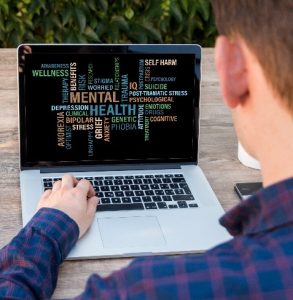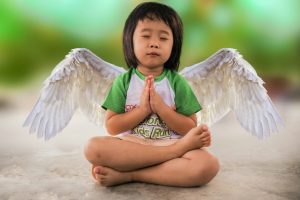If, like me, you are over a certain age, you may look back upon your childhood days with a nostalgic fondness, and lament the times when life seemed free and easy, and the world a happy playground. It might seem like the rose-tinted view of a doddery old fool, but times actually were different. For one thing there were no mobile phones. The internet hadn’t been released to the public. Schools had less focus on assessment, and more time for play. Living in a rural village I really did go out to the woods, or the fields in the morning and stay out until sunset.
Fast-forward 30 years and the picture of childhood is very different. Children of all ages are becoming more anxious than ever before, with reports of an increase in mental health concerns, anxiety, and thoughts of self-harm increasingly commonplace (BBC 2016; The Guardian 2016, 2018; iNews 2017). Scary times. As Javad Khan, Chief Executive of Barnados says “We’re no longer headed for a crisis; we’re already there.” (The Guardian 2018).
The benefits of Holistic Practices

That’s why showing children the benefits of a holistic practice, one that connects their mind and their body, is so important. If we can equip our children with the skills they need to recognise and manage their emotions, stress-levels and anxieties we really can change the world. This generation can grow up knowing how vitally important it is to safeguard our mental health, and will have the potential to enact the changes needed for this to happen. Yoga and mindfulness practices are ideal for connecting the mind and the body, tuning in to what we feel (the emotions), how we feel (the physical sensations and locations of feelings) and how we respond to them. Often these practices are seen to be hard to access (physically and mentally), time-consuming to maintain, and a little too alternative. This couldn’t be further from the truth, in general terms and specifically for children. A kid’s yoga class is focused on fun, self-development, team-work and building a sense of community, which in turn teaches children to understand and develop empathy and compassion. There is no demand for perfection of poses…improvisation and re-naming are actively encouraged! Children make their practice their own. Partner poses, games and peer massage bring the children together, tapping into the human need for socialisation and connection with others. Children have an endless supply of self-belief until that is squashed for them – such as by the demands of a tech-obsessed, competitive, perfection-seeking modern world (which, yes, even children are affected by). With the yoga teacher joining in the class with the children, allowing them to take ownership of, and co-create their lessons, they feel empowered and increase their feelings of self-esteem and self-belief.
Mindfulness

Coupling a kids yoga class with a mindfulness program is a great way to further children’s ability to control their negative feelings, and to turn those negative thoughts we all have, into a positive. Negative thoughts and feelings are not bad, they are part of being human. They only become a problem once we allow them to linger, and obsess over them. Mindfulness teaches children to live in the moment. Worrying about the past, or the future, is like trying to stop the rain from falling when you’re caught without a coat. You were always going to get wet, but now you’re wet and feel bad that you have no control. Far better to accept that right now you’re getting wet, but yesterday you were dry, and tomorrow the rains may be gone. This is what mindfulness teaches children. Not to dismiss their negative feelings, but to accept them as they are, and to recognise that they (as with elation, surprise…and rain!) are transient. This doesn’t have to be taught in a formal meditative style (although some older children enjoy the feeling of this), but can be achieved in any number of ways, such as gentle breathing exercises, mindful colouring, crafting, games, cooking, gardening…all of these teach children to hold their concentration and focus in the moment, skills which they can then transpose to their emotional state and everyday life.
Family Yoga

As a busy parent we often feel that our children are left to go through these experiences on their own, with us grasping at any snatched moments of togetherness we can after school, work, clubs and chores have taken the rest from us. So why not join them on this journey. Yoga and mindfulness are inclusive, loving, bonding experiences; so what better way to spend some quality family time than turning one of those kids clubs into a family yoga session. The session is largely the same as a kids yoga class, allowing the adult to experience the joy of childhood once more, and deepen their connection to their children through partner poses, games and shared experiences. The modern world doesn’t have to strip us and our children of our mental and emotional health. Yoga and mindfulness practices are a way for us to help our children build the skills they need to move forward in life as physically, emotionally and mentally healthy beings.



